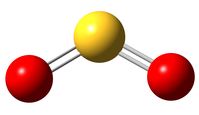|
The measured transition frequencies were taken from
the compilations of
(1) F. J. Lovas 1978, J. Phys. Chem. Ref. Data
7, 1445, and
1985, J. Phys. Chem. Ref. Data 14, 395;
from
(2) E. A. Cohen, K. W. Hillig II, and H. M. Pickett
1995, J. Mol. Struct. 352/353, 273;
and from
(3) H. S. P. Müller, J. Farhoomand, E. A. Cohen,
B. Brupbacher-Gatehouse, M. Schäfer, A. Bauder, and G. Winnewisser,
2000, J. Mol. Spectrosc. 201, 1.
Some higher distortion constants have been fixed to values
of the 32SO2 isotopomer.
With respect to the December 1999 entry, the main entry does
not consider 17O hyperfine structure.
The version number has been retained.
Sizable 17O quadrupole splitting has been observed
for low values of J and Ka in the microwave
and millimeter wave regions. Therefore,
predictions with hyperfine structure are available up to
200 GHz and J = 20.
NOTE: as previously, the
partition function does take into account gI(17O)
= 6 !
Predictions with uncertainties
larger than 1 MHz should be viewed with caution.
The dipole moment is assumed to be the same as for the 32S
isotopic species; the rotation
of the inertial axis system has been taken into account.
|
